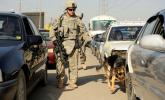 |
 |
Use of Sticky Bombs Increases in Baghdad


Introduction
In Iraq Report XI, ISW predicted the increased use of sticky bombs as a result of a shift in the tactics of insurgent groups. In the past month, it appears that this prediction has proven correct, with increasing attacks on Coalition and Iraqi Forces and Iraqi civilians. The weapon used in these attacks is commonly referred to as an adhesive IED, magnet bomb, or sticky bomb.
The bombs offer the attacker an opportunity fix the bomb (using either adhesive or magnets) to a specific car quickly and without detection, and to detonate the explosive charge remotely. The increased use of sticky bombs represents a devolution in the sophistication of attacks on Coalition and Iraqi military personnel, police, and Iraqi civilians. It also represents a shift in tactics from large-scale attacks to more targeted operations.
Opinions are mixed as to whether the increased use of sticky bombs is the work of the Sunni insurgent group Al-Qaeda in Iraq (AQI), or Iranian-backed Shia militias.
This commentary briefly examines the recent use of sticky bombs and offers analysis on those behind these attacks.